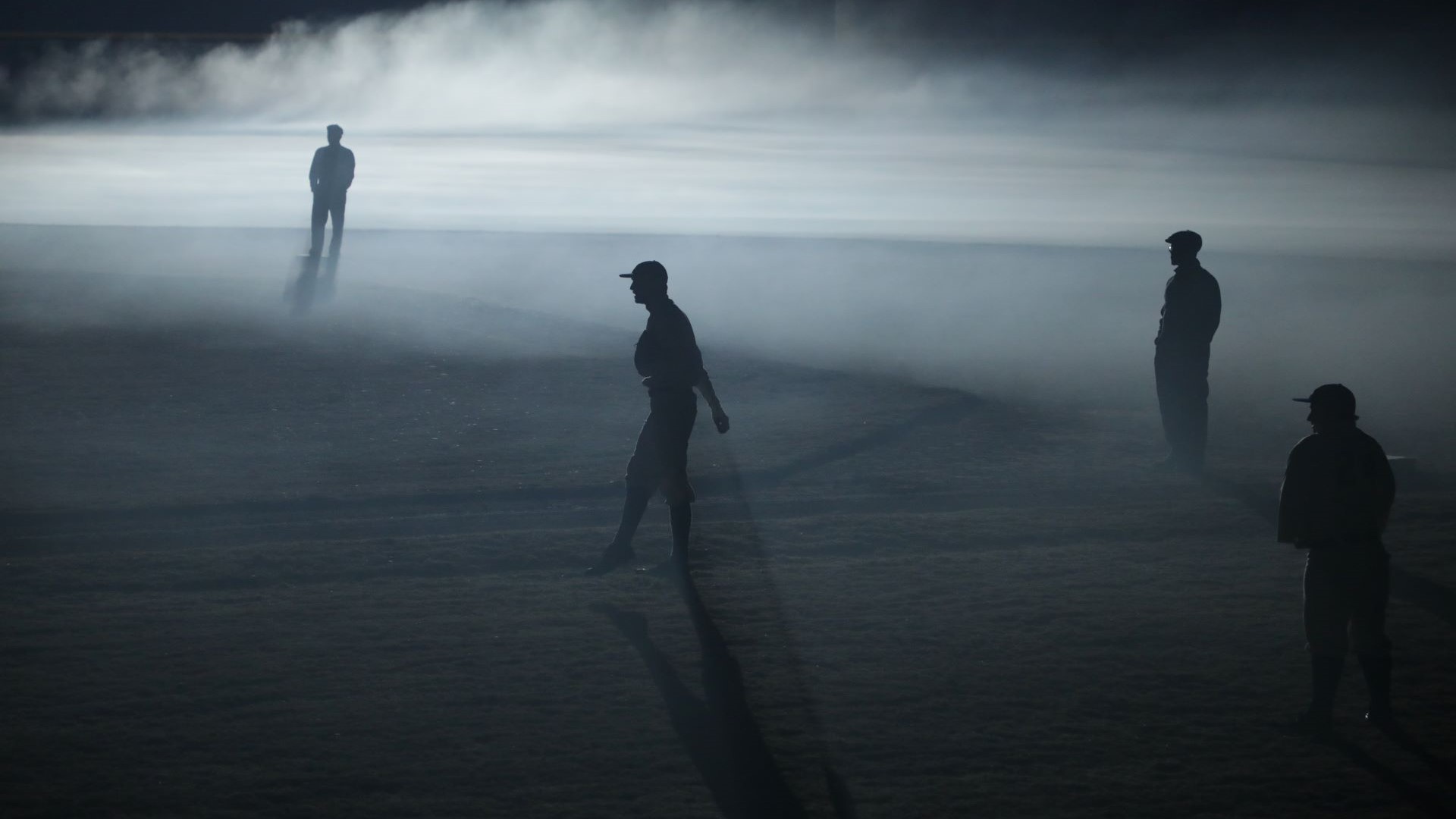Looking Back to Look Forward: GE Celebrates Launch Day With Film That Taps Into the Company’s and Employees’ Deep Roots
March 28, 2024 | by Chris Norris
This week, millions of sports fans will celebrate the return of America’s pastime — a tradition marking new beginnings and unofficially welcoming spring. And as baseball fans across the country flock to stadiums, neighborhood watering holes, and living room sofas, GE will celebrate both its legacy and its own new beginning with a film that pays tribute to the company’s iconic past while introducing GE Aerospace and GE Vernova to the world as future independent companies. Beautifully realized by longtime agency partner Giant Spoon, “GE’s Opening Day” revisits a milestone moment in history: professional baseball’s first night game in 1935, made possible by GE technology.
As the camera advances toward the back of a fedora-topped figure standing vigil by the diamond, a woman’s voiceover says: “In 1935, GE powered the first night game and changed the way we see the game forever.” A double-pull knife switch is thrown, a large light bulb illuminates, and as Depression-era fans behold the dawn of a new era the woman’s voice adds: “Now we’re changing the way we see the future.”
The camera holds on the chiseled face of the young catcher, who stands up and raises his mask to follow a distant arcing object: a modern-day commercial jet that cuts across the night sky. The lights, the engines on that jet, the catcher, the setting, even the woman speaking — they all turn out to be part of GE history, assembled for a momentous change as GE nears its transformation from one GE to three: GE Aerospace, GE Vernova, and GE HealthCare.
Actor Jacob Kaufman (pictured above), who plays the catcher, grew up a diehard Reds fan — a passion nurtured by his father, Joe. Fittingly, GE roots run deep in Kaufman’s family: Joe Kaufman was a GE Aerospace engineer for 23 years and his mother Betty also worked at GE as a secretary in the engineering department at GE Aerospace’s Evendale, Ohio, campus in the early 1950s. Not that any of the family’s close ties to GE came up at Jacob’s audition.
“All I heard was that they wanted baseball players for a GE commercial,” says Jacob, who was surprised to receive a vintage uniform and gear at the wardrobe fitting. Realizing he was about to step into history, he began to prepare, scouring YouTube for the few existing archival videos of 1930s catchers. When he arrived for the shoot, at the same minor league baseball park in Georgia where the Jackie Robinson biopic 42 was filmed, Jacob got his first inkling of the emotional experience in store for him.
“The coolest moment came just after sunset, when we finally took the field,” he says. In the outfield, a perforated hose began to emit a rolling fog. “The wind was blowing and there’s this dreamy fog pouring in from the outfield fence, crawling its way over the field. By the time we were rolling, there’s this haze on the field, the light is glistening off the wet grass. And when we started to throw the ball around, it was truly magical.”
In fact, the moment brought Jacob back to childhood memories of a Boy Scout sleepover with his dad in the outfield at Great American Ballpark, the seventh home to the Cincinnati Reds, some 70 years after GE illuminated that first night game at Crosley Field. “It was such an exciting thing for a kid. I mean, the lights are dim, everyone else is out of the stadium,” Jacob recalls. “I remember the gate to the field opening, the sound of our feet crunching on the warning track, then feeling the grass like a carpet, damp and soft.”
The night of May 24, 1935, was similarly magical. The Reds were on the brink of bankruptcy when they took a gamble and invested $50,000 ($1.1 million adjusted for inflation) in GE’s new lighting technology. At that point in the season the team was drawing only about 3,000 fans, on average, at weekday games. But that night, 20,000 fans showed up to watch the Reds win 2-1. The Reds ended up playing seven night games that season, in front of about 18,500 fans per game.
Another kind of light bulb switched on when Joe Kaufman heard that his son was up for a GE commercial. He refrained from giving Jacob any notes — “I’m pretty sure Jacob knows more about acting than I do,” he says with a chuckle — but the connection was not lost on him. Joe raised Jacob and his four brothers within the radius of both GE Aerospace’s Evendale campus and the Great American Ballpark, two longtime hubs of their family life. With 15 years’ experience in the field, Joe was hired as a black belt in GE Aerospace’s Six Sigma Quality program in 1997, moving through a range of satisfying roles before he retired at age 60 in 2020. Today he looks at the launch of GE Aerospace as a standalone public company and the film with gratitude and high expectations.
“GE’s tradition of innovation and discipline lays a strong foundation for the company’s future,” he says. “With the Evendale site such a center of excellence for the aviation industry, having aerospace be one company’s sole focus will make it even better as time goes on.”
The same feelings are echoed by the unseen voice of the film: well-known actor and director Elizabeth Banks, who, like so many, has her own GE connection. “My dad and many members of my family — my grandfather, my uncles — all worked for General Electric,” she says. “[GE] was his second home, and some of his greatest friendships were built there.” Like the Kaufmans and a cast of many thousands, Banks testifies to the role GE industries continue to play in American life. “It’s one of those companies synonymous with America itself,” she says.
